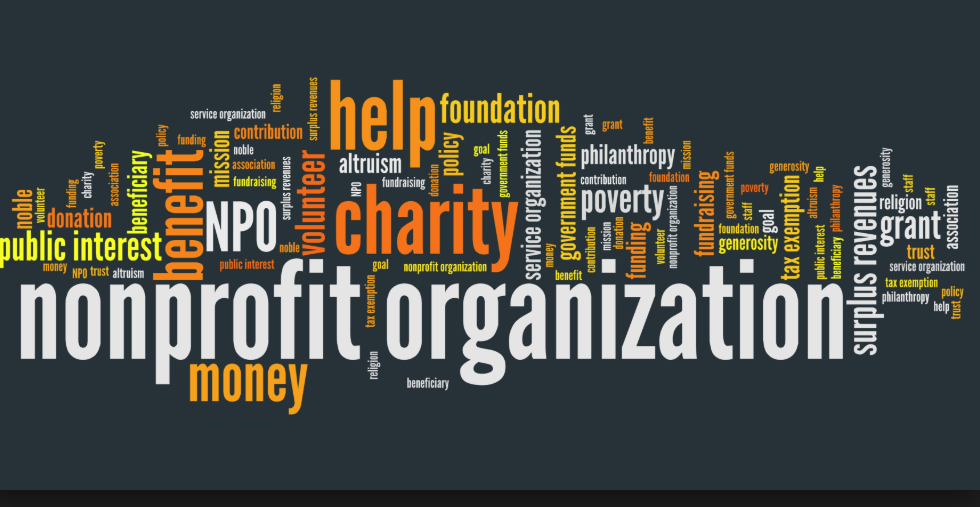Leading Nonprofit Firm: Offering Strategic Assistance for Mission-Driven Teams
Leading Nonprofit Firm: Offering Strategic Assistance for Mission-Driven Teams
Blog Article
The Importance of Partnership and Partnership for a Nonprofit Firm in Maximizing Resources and Enhancing Area Involvement
In the world of not-for-profit agencies, collaboration and partnership arise as crucial devices for fostering and magnifying resources neighborhood involvement. These partnerships not only improve program efficacy however also grow a deeper feeling of area involvement and possession.
Advantages of Collaboration

Additionally, cooperation fosters development by urging the exchange of concepts and ideal techniques. When organizations collaborate, they can explore varied perspectives, causing innovative options that might not emerge alone. This common analytic approach can eventually improve service delivery and program outcomes.
Furthermore, collective efforts can boost community involvement. When nonprofits partner with each other, they can mobilize wider assistance from stakeholders, including volunteers, benefactors, and community participants. This collective involvement not only increases visibility but additionally strengthens the integrity of the participating organizations.
Structure Strategic Partnerships
Partnership among not-for-profit firms often leads to the development of calculated partnerships, which are important for taking full advantage of impact and attaining common objectives. These partnerships make it possible for organizations to leverage each other's strengths, improving solution shipment and expanding outreach. By aligning goals and goals, nonprofits can create a collaborating result that intensifies their reach and efficiency within the neighborhood.
Building calculated partnerships requires careful planning and common understanding. Establishing open lines of interaction promotes trust, permitting partners to discuss expectations, obligations, and sources transparently.
In addition, plainly specified duties and roles are vital for responsibility and success. Formalizing the collaboration via created arrangements can offer a structure for partnership, describing the scope of job, performance metrics, and assessment methods. By cultivating these strategic partnerships, not-for-profit firms can boost their capability to resolve area demands, innovate options, and activate resources properly, ultimately resulting in a much more lasting and substantial effect in the areas they serve.
Sharing Resources Effectively
Exactly how can not-for-profit companies maximize their impact through effective source sharing? By strategically collaborating with other companies, nonprofits can improve their functional performance and extend their reach within the neighborhood. Source sharing includes pooling numerous assets, including economic resources, workers, knowledge, and facilities, to deal with common objectives better.

Additionally, leveraging each various other's strengths can foster innovation. By exchanging expertise and best practices, companies can boost service delivery and develop brand-new options to neighborhood challenges. Effective source sharing likewise grows a feeling of unity, reinforcing the concept that cooperation is necessary for achieving considerable social influence.
Involving the Community
What techniques can nonprofit agencies employ to efficiently engage their neighborhoods? Making use of various systems, such as social media, newsletters, and neighborhood forums, enables companies to distribute details, get feedback, and foster dialogue.
In addition, developing partnerships with regional companies can enhance outreach efforts. nonprofit agency. Collaborating with institutions, organizations, and other nonprofits can amplify resources and create an extra considerable support network, permitting joint campaigns that reverberate with area requirements
Moreover, organizing area events, workshops, and volunteer chances can assist in deeper engagement. These activities create a feeling of belonging and encourage energetic engagement, making it possible for individuals to contribute to the firm's goals while constructing connections with fellow area participants.
Measuring Collaborative Success
Reviewing the efficiency of collective efforts is necessary for nonprofit agencies seeking to optimize their impact. Gauging joint success involves developing clear, measurable objectives and making use of a variety of metrics to evaluate efficiency. Key signs might include the number of collaborations formed, sources shared, and the tangible results attained with cooperation.
To efficiently measure success, nonprofits ought to carry out a structure that integrates both quantitative and qualitative information. Studies and meetings can supply insights right into stakeholder fulfillment and the perceived value of partnerships. In addition, tracking metrics such as solution reach, neighborhood engagement degrees, and economic efficiency can offer a detailed view of joint performance.
Normal view it evaluations should be conducted to determine locations of renovation and ideal practices. This iterative procedure not only improves accountability but likewise cultivates a culture of continual learning within the company - nonprofit agency. By my website transparently sharing evaluation results with stakeholders and companions, nonprofits can enhance connections and construct trust
Ultimately, gauging collective success makes it possible for not-for-profit agencies to refine their strategies, designate sources much more efficiently, and reinforce their mission-driven initiatives, causing a higher cumulative effect on the neighborhoods they offer.
Conclusion

In the world of not-for-profit firms, partnership and partnership arise as essential mechanisms for cultivating and magnifying sources community interaction - nonprofit agency. By cultivating these tactical alliances, not-for-profit agencies can improve their capability to address neighborhood needs, innovate services, and mobilize sources properly, inevitably leading to a more lasting and considerable influence in the areas they offer
By purposefully teaming up with other companies, nonprofits can enhance their functional efficiency and expand their reach within the area.What approaches can nonprofit firms utilize to effectively involve their neighborhoods?Collaboration and collaboration stand as important columns for nonprofit companies intending to make the most of resources and boost neighborhood interaction.
Report this page